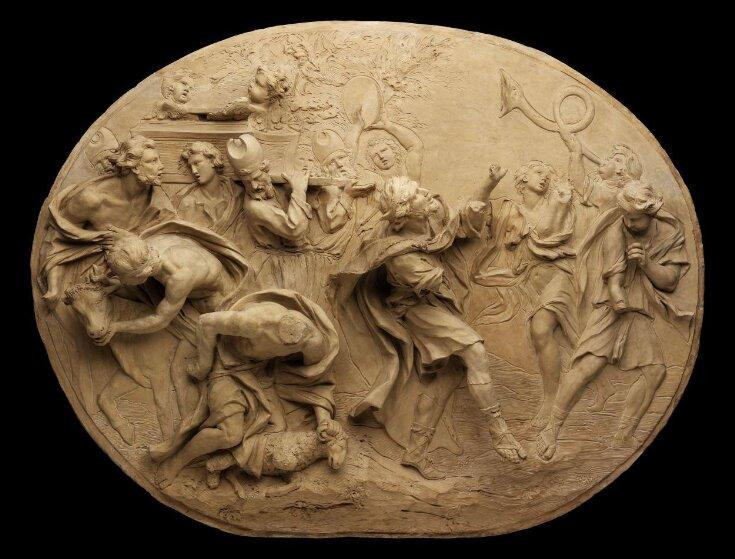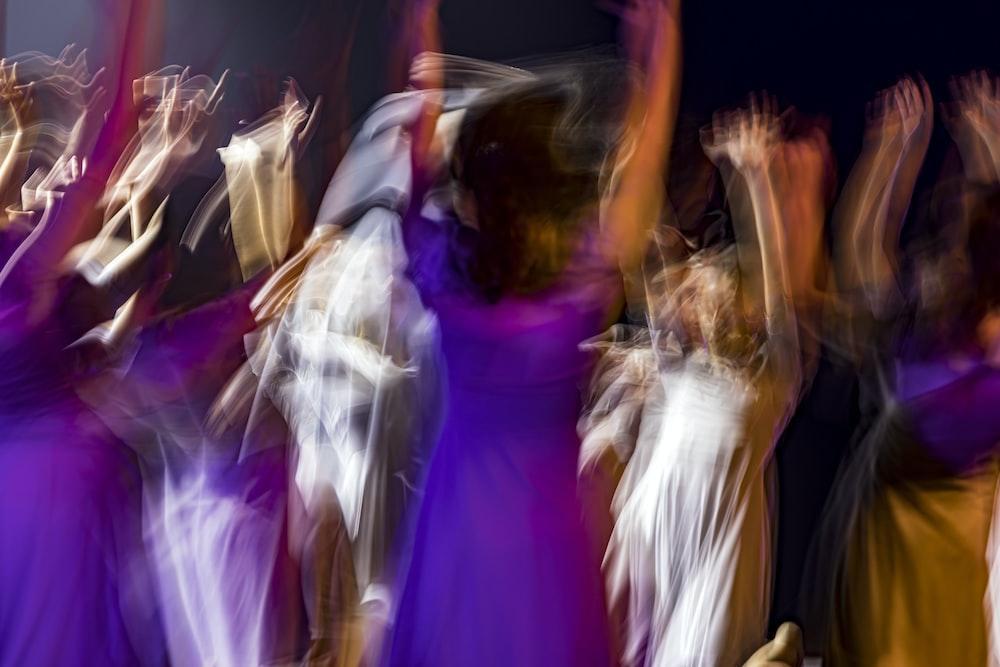Christian culture is rich with sayings passed down through generations, drawing from biblical teachings, hymns, and shared values. Among these, you might encounter the phrase: “They danced without leaving room for Jesus.” This saying isn’t found verbatim in scripture, yet it vividly conveys a specific message about physical closeness and Christian conduct. So, what exactly does it mean to Dance Without Leaving Room For Jesus Meaning, and where did this peculiar expression originate?
The Meaning Behind “Leave Room for Jesus”
When someone comments that a couple is “dancing without leaving room for Jesus,” they are suggesting the pair is dancing very closely, with minimal space between them. The underlying principle within Christian circles, particularly those with conservative viewpoints on physical intimacy outside of marriage, is that couples should maintain enough physical distance to theoretically accommodate another person between them. This “extra person” is humorously and symbolically suggested to be Jesus Christ. The idea is that the imagined presence of Jesus would discourage any behavior deemed inappropriate or overly intimate in a public setting like a dance floor. This concept, while sometimes used satirically today, stems from a genuine concern about maintaining purity and avoiding temptation.
Purity Culture and the “Room for Jesus” Admonition
The phrase “leave room for Jesus” is deeply rooted in Christian purity culture, which emphasizes the importance of moral and especially sexual purity. The Bible indeed stresses sexual purity as a way to honor God with our bodies. As Paul writes in 1 Corinthians 6:18-20, urging believers to, “Flee from sexual immorality. Every other sin a person commits is outside the body, but the sexually immoral person sins against his own body. Or do you not know that your body is a temple of the Holy Spirit within you, whom you have from God? You are not your own, for you were bought with a price. So glorify God in your body.”
Within many Christian denominations, particularly those with stricter interpretations, sexual activity is reserved for marriage. Therefore, any physical closeness that could be perceived as leading to premarital intimacy is discouraged. This is where variations of the phrase “leave room for Jesus” come into play, extending beyond just dancing. You might hear:
- Leave room for Jesus.
- Save room for Jesus.
- Make room for Jesus.
These admonitions are adaptable to various situations. Sitting close on a sofa? Leave room for Jesus. Sharing a cozy booth at a restaurant? Make room for Jesus. Even in private settings, the principle of “saving room for Jesus” serves as a reminder to maintain boundaries and resist temptation. The concept is that physical distance, symbolic of spiritual mindfulness, can help prevent situations that might lead to actions considered sinful. It introduces a thought-provoking pause, encouraging couples to consider their actions in light of their faith.
Of course, not all physical contact is inherently sinful, and affection within appropriate boundaries is a healthy part of relationships. However, dancing, particularly close dancing, has been historically viewed within some Christian circles as a potentially “risky venture” for those committed to purity.
 People dancing in a room
People dancing in a room
Alt text: A diverse group of young adults energetically dancing in a brightly lit room, suggesting joyful social interaction and movement.
Tracing the Origins of the “Leave Room for Jesus” Saying
Dance, in its essence, can be a very sensual and expressive art form. In nature, dance often plays a role in courtship rituals across the animal kingdom. Humans, too, can use dance as a form of attraction and connection, though it also serves as a purely social and celebratory activity. This duality, the potential for both innocent expression and sensual connection, is likely a reason why some Christians have approached dancing with caution. The saying “leave room for Jesus” probably emerged as a practical, memorable way to articulate the need for healthy boundaries in social interactions, particularly those involving dance.
While pinpointing the exact origin of “danced without leaving room for Jesus” is difficult due to a lack of formal documentation, its emergence likely coincides with periods of significant cultural shifts in attitudes towards sexuality. The 20th century, marked by sexual revolutions in the 1920s, 1960s, and 1990s, saw increasing societal acceptance of more liberal views on sexuality. In response, conservative Christian communities often sought to reinforce traditional values and protect their youth from what they perceived as the eroding moral standards of secular culture, including the perceived dangers of dance halls and changing views on relationships.
This cultural backdrop gave rise to various purity movements, especially in the 1990s, including purity pledges, purity rings, and purity balls. The phrase “leave room for Jesus” likely gained traction as a catchy and easily understood element within these broader efforts to promote and maintain purity standards during these evolving times. It served as a cultural shorthand for a set of beliefs and expectations around physical interaction between unmarried individuals.
Modern Interpretations and Humorous Usage
Today, while you still might hear the phrase “They danced without leaving room for Jesus” or “Save room for Jesus,” its tone has often shifted. It is less frequently used as a serious reprimand about purity and more often employed satirically or humorously.
The phrase has permeated popular culture, appearing in unexpected places. For instance, it was featured in an episode of the popular ABC sitcom Black-ish, demonstrating its recognition beyond purely religious circles. It has also become an internet meme, often used in a lighthearted way to comment on situations involving close proximity. Even the movie Footloose, while not directly using the phrase, captures the essence of the cultural tension surrounding dance in conservative communities, where dance is viewed as a threat to morality.
Interestingly, the “leave room for Jesus” concept found a novel application during the COVID-19 pandemic. Churches and other organizations playfully adapted the saying to promote social distancing. Posters and signs encouraging “leaving room for Jesus” were used to remind people to maintain physical space to slow the spread of the virus, giving the old adage a contemporary and public health-oriented twist.
Furthermore, the idea of “making space for Jesus” is evolving beyond physical distance to encompass making room for Jesus’s influence in daily life. In an increasingly busy and distracting world, the phrase now serves as a reminder to intentionally create space for spiritual reflection, prayer, and Christian values amidst the demands of modern living.
Dancing in the Bible: A Balanced Perspective
Dancing holds a complex and multifaceted role in the Bible. It was an integral part of ancient Hebrew culture, used in worship, praise, celebrations, and commemorations of victories.
Biblical Examples of Dancing for God
Miriam, the sister of Moses, led women in celebratory dance and song after the miraculous parting of the Red Sea. Exodus 15:20 recounts, “Then Miriam the prophetess, Aaron’s sister, took a tambourine in her hand, and all the women followed her, with tambourines and dancing.” This event highlights dance as an expression of exuberant praise and gratitude to God.
After David’s triumph over Goliath, women greeted him with singing and dancing as he returned from battle. 1 Samuel 18:6-7 describes, “When the women were coming home after David had killed Goliath, they came out from all the towns of Israel to meet King Saul with singing and dancing, with joyful songs and with timbrels and lyres. As they danced, they sang: ‘Saul has slain his thousands, and David his tens of thousands.'” This illustrates dance as a communal expression of joy and recognition of God’s hand in victory.
 David Dancing before the Arc top image
David Dancing before the Arc top image
Alt text: Relief carving depicting King David dancing with joyous abandon before the Ark of the Covenant, highlighting a biblical example of worshipful dance.
King David himself famously danced before the Lord with great enthusiasm when the Ark of the Covenant was returned to Jerusalem. 2 Samuel 6:14-17 details, “David, wearing a linen ephod, danced before the Lord with all his might. So David and all Israel brought up the ark of the Lord with shouts and the sound of trumpets. As the ark of the Lord was entering the City of David, Michal daughter of Saul watched from a window. And when she saw King David leaping and dancing before the Lord, she despised him in her heart. They brought the ark of the Lord and set it in its place within the tent that David had pitched for it, and David sacrificed burnt offerings and fellowship offerings before the Lord.” David’s uninhibited dance, even to the point of his wife’s disapproval, exemplifies passionate worship.
The prophet Jeremiah spoke of dancing as a sign of restoration and rejoicing. Jeremiah 31:4 proclaims, “Again I will rebuild you and you will be rebuilt, O Virgin Israel! Again you will take up your timbrels and go out to dance with the joyful.” And Jeremiah 31:13 further states, “Then young women will dance and be glad, young men and old as well. I will turn their mourning into gladness; I will give them comfort and joy instead of sorrow.” These verses portray dance as an expression of communal joy and God’s promise of restoration.
Ecclesiastes 3:1,4 acknowledges the appropriateness of dance within the rhythm of life: “There is a time for everything, and a season for every activity under the heavens: … a time to weep and a time to laugh, a time to mourn and a time to dance.” This verse places dance within a balanced perspective, recognizing its place alongside other human emotions and activities.
The Psalms also encourage dance as a form of praise. Psalm 149:3 urges, “Let them praise his name with dancing and make music to him with timbrel and harp.” Psalm 150:4 further commands, “Praise him with timbrel and dancing; praise him with the strings and pipe!” These Psalms explicitly call believers to use dance as a means of worship and praise to God.
Sinful Dancing as Depicted in the Bible
However, the Bible also presents instances of dancing in a negative light, particularly when associated with idolatry or immoral behavior. The Israelites’ worship of the golden calf after the Exodus involved dancing, which provoked God’s anger. Exodus 32:19 recounts, “When Moses approached the camp and saw the calf and the dancing, his anger burned and he threw the tablets out of his hands, breaking them to pieces at the foot of the mountain.” This example connects dance with idolatry and disobedience.
 Sinful Dancing
Sinful Dancing
Alt text: A dimly lit, crowded club scene with people dancing, suggesting an environment of potential excess and moral ambiguity.
During the contest on Mount Carmel, the prophets of Baal danced wildly around their altar in a futile attempt to summon their god. 1 Kings 18:26 describes, “So they took the bull given them and prepared it. Then they called on the name of Baal from morning till noon. ‘Baal, answer us!’ they shouted. But there was no response; no one answered. And they danced around the altar they had made.” This portrays dance associated with false worship and desperation.
The story of Herod and John the Baptist illustrates dance used for manipulative and ultimately tragic purposes. Mark 6:22, 25 recounts how Herodias’s daughter danced for Herod and his guests, pleasing him so much that he rashly promised her anything she desired. Prompted by her mother, she requested John the Baptist’s head, leading to his execution. “When his daughter Herodias came in and danced, she pleased Herod and his dinner guests. The king said to the girl, “Ask me for anything you want, and I’ll give it to you.” …She came back to the king at once and said, “I want you to give me John the Baptist’s head on a platter.” This example connects dance with temptation, manipulation, and sinful outcomes.
These biblical examples demonstrate that dance, in itself, is morally neutral. Its spiritual value depends on the context, intention, and manner in which it is performed. Discernment is essential for Christians to understand how dance fits into a life that honors God.
Did Jesus Himself Dance?
Jesus Christ is the ultimate example for Christian living. Looking to his life offers guidance on many aspects of faith and practice. So, did Jesus dance? The Bible does not explicitly state whether Jesus danced or not. However, considering his cultural context as a Jew in first-century Palestine, it is highly probable that he participated in celebratory dances common in Jewish tradition. Jesus attended a wedding in Cana, where he performed his first miracle (John 2). Jewish weddings were joyous, extended celebrations that included dancing. It is reasonable to assume Jesus would have been part of these customary dances.
Furthermore, Jesus indirectly references dancing in his parables. In Luke 7:31–32, he uses the analogy of children playing in the marketplace: “To what then shall I compare the people of this generation? What are they like? They are like children sitting in the marketplace and calling out to each other: ‘We played the flute for you, yet you did not dance; we sang a dirge, yet you did not mourn.’” This analogy suggests that dancing was a normal and expected response to joyful music within his cultural context. Jesus uses this common understanding to illustrate the unresponsiveness of his generation to his message.
 person dancing for Jesus
person dancing for Jesus
Alt text: A silhouetted figure joyfully dancing with arms raised against a vibrant sunset, symbolizing freedom of expression and worship.
Dancing for Christ’s Glory
While we can infer Jesus likely participated in dance forms of his time, it’s important to understand that these dances differed significantly from modern Western dance styles. Jewish tradition, for instance, often prohibited mixed-gender dancing for religious reasons, reflecting rigorous standards regarding interactions between men and women. So, what does Jesus’s likely participation in dance tell us about the idea of “dancing without leaving room for Jesus”? It suggests that there are ways to dance that are honoring to God.
Ultimately, the principle for Christians is found in 1 Corinthians 10:31, where Paul advises, “So whether you eat or drink or whatever you do, do it all for the glory of God.” Unmarried individuals can indeed dance without compromising their commitment to sexual purity. “Leaving room for Jesus” does not need to be taken as a literal measurement of physical space between dance partners. Instead, it serves as a broader principle: in all aspects of life, including social interactions and dance, Christians should strive to “make space for Jesus” – to be mindful of their actions and intentions, and to ensure they are honoring to God. This involves submitting to the guidance of the Holy Spirit and asking oneself: “Does this activity, in this way, glorify God?” If the answer is yes, then one can confidently dance for Christ.
